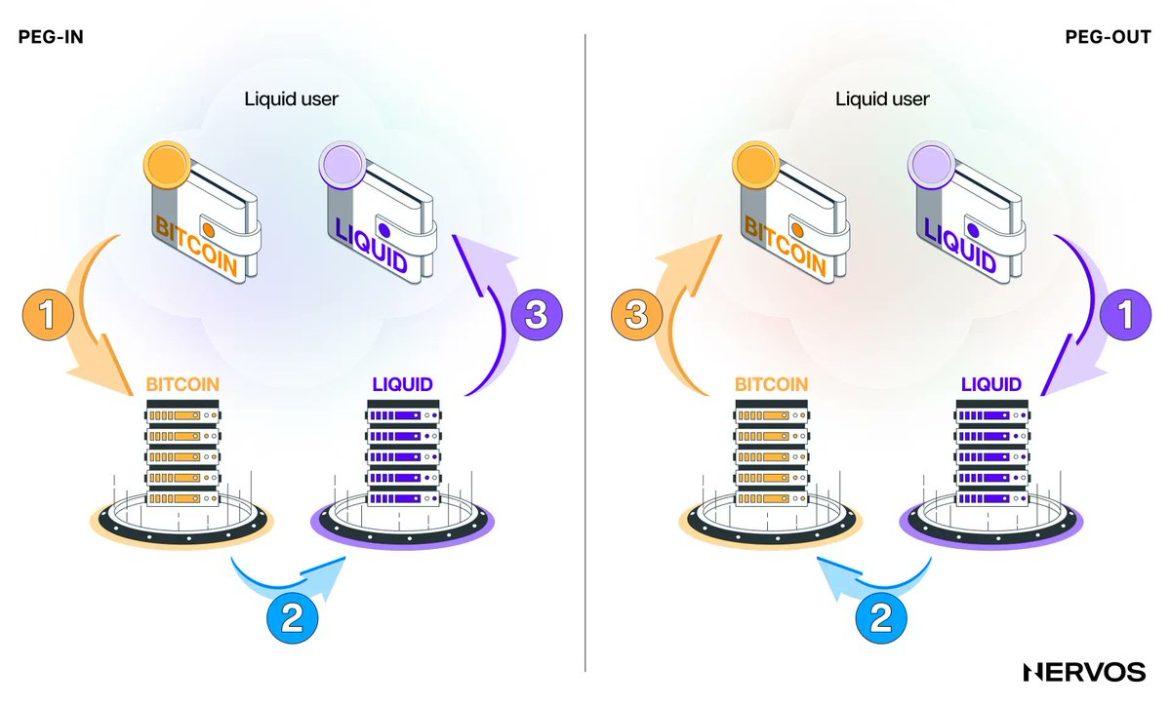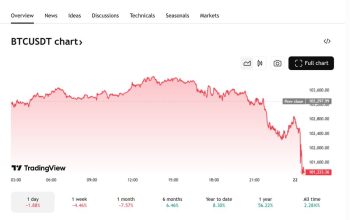The Evolution and Future of Bitcoin: A Comprehensive Analysis
The Ever-Changing Landscape of Bitcoin
Imagine a world where financial transactions are seamless, secure, and decentralized. This is the promise of Bitcoin, the pioneering cryptocurrency that has revolutionized the way we think about money. Since its inception in 2009, Bitcoin has evolved from a niche interest among tech enthusiasts to a mainstream financial asset, capturing the imagination of investors, technologists, and economists worldwide. As we stand in 2025, the landscape of Bitcoin is more dynamic than ever, with innovations like Layer 2 solutions and cross-chain possibilities shaping its future.
The Rise of Decentralized Finance (DeFi)
Layer 2 Solutions: Enhancing P2P Lending
One of the most significant developments in the Bitcoin ecosystem is the growth of Decentralized Finance (DeFi). DeFi platforms aim to provide financial services without the need for traditional intermediaries, leveraging blockchain technology to facilitate peer-to-peer (P2P) transactions. Robin Obermaier, CEO of Liquidium, highlights the potential of Layer 2 solutions to enhance P2P lending. Layer 2 solutions, such as the Lightning Network, operate on top of the main Bitcoin blockchain, enabling faster and cheaper transactions. This innovation is crucial for scaling Bitcoin and making it more accessible for everyday use [1].
The Lightning Network, for instance, allows for off-chain transactions that are settled on the main Bitcoin blockchain. This means that users can conduct multiple transactions quickly and at a lower cost, without clogging the main network. This scalability is essential for Bitcoin to compete with traditional payment systems and attract a broader user base.
Navigating Cross-Chain Possibilities
As the DeFi landscape evolves, navigating cross-chain possibilities becomes increasingly important. Cross-chain interoperability allows different blockchain networks to communicate and interact with each other, enabling the seamless transfer of assets and data. This interoperability is essential for creating a more integrated and efficient financial ecosystem. For Bitcoin, this means exploring ways to interact with other blockchain networks, such as Ethereum, to leverage their smart contract capabilities and expand the range of financial services available [1].
Cross-chain solutions can also enhance liquidity and reduce fragmentation in the DeFi space. By allowing assets to move freely between different blockchains, users can access a wider range of financial products and services, ultimately leading to a more robust and resilient financial system.
Technical Analysis: Bullish Momentum and Market Trends
Breaking Out of the Falling Wedge Pattern
Technical analysis provides valuable insights into Bitcoin’s price movements and market trends. Recently, Bitcoin has broken out of a falling wedge pattern with significant volume, indicating bullish momentum. A falling wedge pattern typically signals a reversal in a downtrend, and the breakout suggests that Bitcoin is poised for upward movement. A successful retest of the breakout zone would confirm this bullish trend, making it an exciting time for crypto enthusiasts [2].
The falling wedge pattern is a bullish reversal pattern that forms when the price makes lower lows and lower highs within a contracting range. The breakout from this pattern, accompanied by high trading volume, is a strong indicator of a potential price rally. Traders and investors should keep a close watch on the breakout zone to confirm the bullish trend and make informed trading decisions.
Key Support and Resistance Levels
Understanding key support and resistance levels is crucial for predicting Bitcoin’s future price movements. Support levels are price points where buying pressure is strong enough to prevent the price from falling further, while resistance levels are where selling pressure is strong enough to prevent the price from rising. Analyzing these levels can help investors make informed decisions and optimize their portfolios. For instance, identifying macro support and resistance levels can provide a clearer picture of Bitcoin’s potential price range and help investors navigate market volatility [5].
Support and resistance levels are dynamic and can change over time as market conditions evolve. Technical analysts use various tools and indicators, such as moving averages, Fibonacci retracement levels, and pivot points, to identify these key levels. By monitoring these levels, investors can better anticipate price movements and adjust their strategies accordingly.
Bitcoin vs. Gold: A Historical Evolution
Safe Havens in a Volatile Market
Bitcoin and gold have often been compared as safe havens in volatile markets. Both assets have historically been seen as stores of value, providing protection against inflation and economic uncertainty. However, their historical evolutions and market dynamics differ significantly. Bitcoin, being a digital asset, benefits from technological advancements and increasing adoption, while gold has a long-standing reputation as a tangible asset. Gain insights from detailed market analysis to optimize your portfolio and make smarter decisions with key data [8].
Bitcoin’s digital nature allows it to be easily transferred and divided, making it a more flexible store of value compared to gold. Additionally, Bitcoin’s supply is fixed, with a maximum of 21 million coins that will ever be mined, which makes it resistant to inflation. On the other hand, gold’s value is influenced by factors such as mining costs, geopolitical events, and central bank policies.
Optimizing Your Portfolio
Investors often consider diversifying their portfolios with both Bitcoin and gold to balance risk and reward. While Bitcoin offers the potential for high returns, it is also more volatile. Gold, on the other hand, provides stability but may not offer the same level of growth. By understanding the historical evolution and market dynamics of both assets, investors can make more informed decisions and optimize their portfolios for better performance [8].
Diversification is a key strategy for managing risk in investment portfolios. By allocating a portion of their assets to both Bitcoin and gold, investors can hedge against market volatility and capitalize on the strengths of each asset. For example, during periods of high market uncertainty, gold may outperform Bitcoin, while during bull markets, Bitcoin may offer higher returns.
The Future of Bitcoin: Projections and Opportunities
Bullish Projections and Market Sentiment
The future of Bitcoin looks promising, with bullish projections and positive market sentiment. As more institutions and individuals adopt Bitcoin, its value and utility are likely to increase. The ongoing development of Layer 2 solutions and cross-chain interoperability will further enhance Bitcoin’s scalability and functionality, making it a more attractive option for a wider range of users [1].
Institutional adoption of Bitcoin has been on the rise, with major companies and financial institutions investing in the cryptocurrency. This trend is expected to continue, as more organizations recognize the potential of Bitcoin as a store of value and a medium of exchange. Additionally, regulatory clarity and technological advancements are likely to drive further adoption and integration of Bitcoin into the mainstream financial system.
Opportunities for Investors
For investors, the current landscape presents numerous opportunities. Whether it’s through direct investment in Bitcoin, participation in DeFi platforms, or leveraging technical analysis to make informed trading decisions, there are multiple avenues to explore. The key is to stay informed, adapt to market changes, and take advantage of the evolving technologies and trends in the Bitcoin ecosystem [1, 2, 5, 8].
Investors can also explore various investment vehicles, such as Bitcoin ETFs, futures, and options, to gain exposure to the cryptocurrency market. Additionally, participating in DeFi platforms can provide opportunities for earning passive income through staking, lending, and yield farming. By staying informed and adaptable, investors can capitalize on the dynamic and evolving landscape of Bitcoin.
Conclusion: Embracing the Future of Bitcoin
As we look ahead, it is clear that Bitcoin’s journey is far from over. The innovations in DeFi, the potential of Layer 2 solutions, and the increasing importance of cross-chain interoperability are all shaping the future of this groundbreaking technology. For investors, enthusiasts, and technologists, the opportunities are vast and exciting. Embracing these changes and staying informed will be crucial for navigating the dynamic landscape of Bitcoin and capitalizing on its potential.
The future of Bitcoin is bright, with numerous innovations and developments on the horizon. By staying informed and adaptable, investors and enthusiasts can take advantage of the evolving technologies and trends in the Bitcoin ecosystem. Whether it’s through direct investment, participation in DeFi platforms, or leveraging technical analysis, the opportunities are endless. Embrace the future of Bitcoin and be part of the revolution in decentralized finance.
—
Sources:





